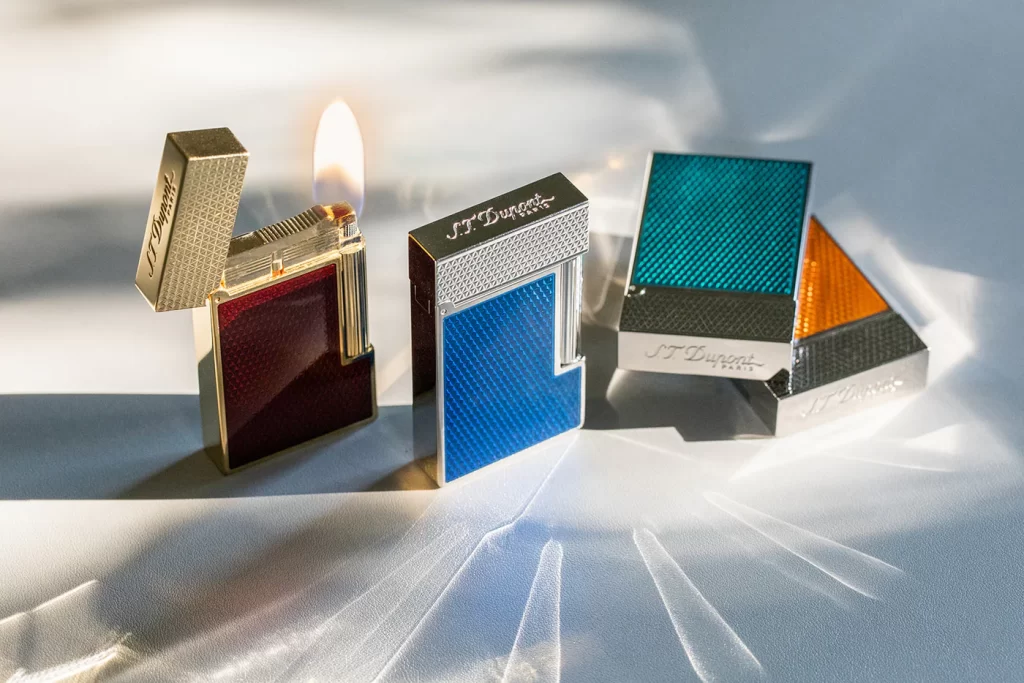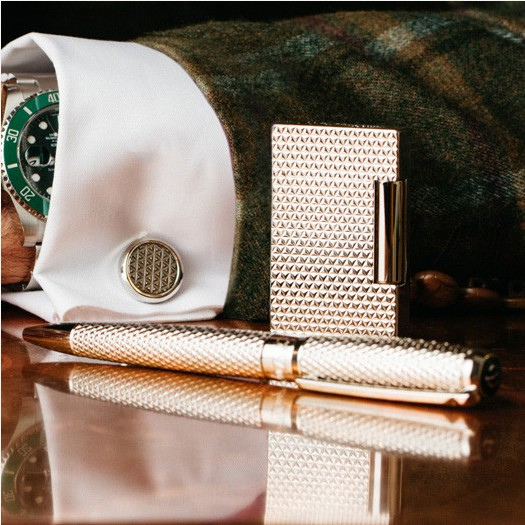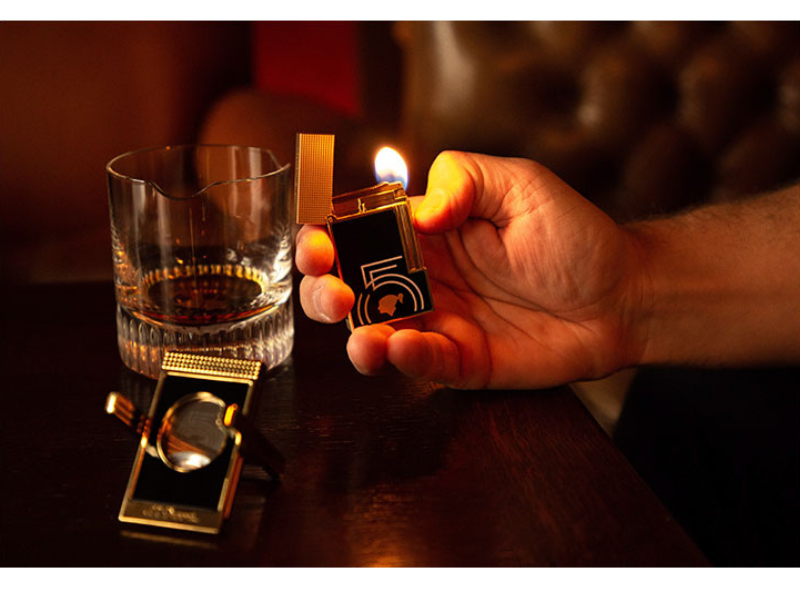Igniting the Flame: The Unassuming Beginnings
In the world of everyday objects, there are few as unassuming yet essential as the lighter. Its humble flame has ignited countless fires, lit countless cigars, and sparked countless innovations. But have you ever stopped to ponder its history? The tale of the lighter is one of perseverance, invention, and ultimately, luxury. This post will take you on a journey from the creation of the first rudimentary lighters to the birth of the luxury lighter industry.
The dawn of the lighter dates back to the 17th century when flintlock pistols were converted to create fire. Gunpowder was the fuel, and the spark from the firearm wheel ignited the flame. These early lighters were cumbersome and potentially dangerous, but they served a necessary function, especially for soldiers on campaign.
In the 19th century, a German chemist named Johann Wolfgang Döbereiner invented one of the first lighters, often referred to as Döbereiner’s lamp. This lighter functioned by igniting flammable hydrogen gas over a platinum metal catalyst, emitting an impressive amount of heat and light.
A significant stride in the development of lighters was the invention of ferrocerium, often misidentified as flint, by Carl Auer von Welsbach in 1903. This material, when scratched, produced a large spark, ideal for igniting the fuel of many lighters. It was cheap enough to be used in disposable items, paving the way for companies like Ronson to develop practical and easy-to-use lighters. In 1910, Ronson released the first Pist-O-Liter, and in 1913, the company developed its first lighter, named the “Wonderlite,” a permanent match style of lighter.
During World War I, soldiers began to create lighters out of empty cartridge cases. A soldier devised a way to insert a chimney cap with holes in it to make the lighter more windproof. This innovation was crucial as it led to the development of more reliable lighters like the Zippo, invented by George Grant Blaisdell in 1932. The Zippo lighter was lauded for its reliability, “Life Time Warranty,” and marketing as “Wind-Proof”.
The lighter industry saw a significant shift in the 1950s when the fuel of choice switched from naphtha to butane. Butane allowed for a controllable flame and had less odour. This change also led to the use of piezoelectric spark, which replaced the need for a flint wheel in some lighters and was used in many Ronson lighters.
As the 20th century came to a close, the production of lighters had become a global industry, with most of the world’s lighters produced in France, the United States, China, and Thailand.

Among these lighter manufacturers, a few stood out for their commitment to luxury and high-quality craftsmanship. One of these was S.T. Dupont, a Parisian brand that began as a maker of luxury suitcases in 1872 before transitioning to producing luxury lighters in 1941. The first S.T. Dupont lighter was created for the Maharajah of Patiala, who ordered 100 solid gold lighters. This marked the birth of the world’s first luxury lighter.
As we move forward into the blog post, you can expect to learn more about the evolution of the lighter industry, the rise of luxury light.
The Birth of the Lighter
Before the invention of the lighter, humanity relied on a variety of rudimentary fire-starting tools. The most primitive of these were friction-based methods, such as rubbing two pieces of wood together or striking a piece of flint against steel to create sparks. These methods were cumbersome and time-consuming, but they were also essential for survival, providing a means to cook food, keep warm, and ward off predators. Over time, these basic tools were refined and improved, leading to the development of more advanced fire-starting devices.
However, it was not until 1823 that the first true lighter, known as Döbereiner’s lamp, was invented. This groundbreaking device was the brainchild of a German chemist named Johann Wolfgang Döbereiner. Rather than relying on physical friction to create a spark, Döbereiner’s lamp used a chemical reaction to produce flammable hydrogen gas. When this gas was exposed to a platinum metal catalyst, it would ignite, producing a substantial amount of heat and light.
One of the key features that set Döbereiner’s lamp apart from earlier fire-starting tools was its portability. The device was small enough to be carried around, making it much more convenient than its predecessors. Its invention marked a significant step forward in the history of fire-starting technology, paving the way for the development of the modern lighters we know today.
In the early days, lighters were primarily used for practical purposes, such as lighting candles, igniting gas stoves, or starting fires for cooking and heating. However, they also found use in more specialized contexts. For instance, the Turkish traveller Evliya Çelebi, visiting Vienna in 1662, admired the lighters being manufactured there, noting their usefulness for soldiers on campaign.
The invention of the lighter had a significant impact on society and culture. For instance, the convenience and portability of lighters made them an indispensable tool for smokers, leading to a surge in their popularity. Furthermore, the advent of the lighter also played a role in the spread of certain social practices. For example, the act of offering a light to someone else, whether for a cigarette or a cigar, became a common social gesture, symbolizing camaraderie and shared experiences.
The Rise of the Lighter as a Utility Tool
If we are to understand the progression of the lighter from a simple tool to an indispensable instrument of everyday life, we must first take a journey back in time. The lighter’s evolution is intertwined with some of the most significant events in human history, including wars and the rise of societal habits, such as smoking.
The widespread adoption of the lighter as an everyday tool can be traced back to the 20th century, during a time when cigarette smoking became increasingly popular worldwide. In fact, cigarettes are the leading cause of preventable disease, disability, and death in the United States, with more than 480,000 deaths annually, suggesting a high volume of lighter usage for this purpose alone.
Lighters became more than just a means to an end; they were practical, portable, and provided a reliable source of fire. They were used to light stoves, lanterns, and candles, serving as a beacon of light in the darkness and a symbol of warmth and comfort.
During times of war, lighters took on an even more significant role. During World War I, soldiers created lighters out of empty cartridge cases. A soldier came up with a means to insert a chimney cap with holes in it to make it more windproof. The creation of these improvised lighters was a testament to the ingenuity and resourcefulness of soldiers who were forced to make do with limited resources. The lighter was not just a tool, but a lifeline.
The development of the lighter industry also played a critical role in the rise of the lighter as a utility tool. Companies like Zippo and Ronson made lighters more accessible to the public. In particular, the development of the flint by Carl Auer von Welsbach in 1903 made the production of modern lighters possible. With von Welsbach’s flint, companies like Ronson were able to develop practical and easy-to-use lighters, further increasing the popularity and utility of the lighter.
Furthermore, in the 1950s, there was a switch in the fuel of choice from naphtha to butane, which allowed for a controllable flame and had less odor. This also led to the use of piezoelectric spark, which replaced the need for a flint wheel in some lighters and was used in many Ronson lighters. These advancements made lighters even more user-friendly and versatile, solidifying their place as a staple in homes and pockets worldwide.
In 1973, the American company Bic introduced the first disposable lighter, another milestone in the history of the lighter. This development made lighters even more accessible and convenient for everyday use, further cementing the lighter’s status as a utility tool.
In conclusion, the rise of the lighter as a utility tool was a result of societal trends, historical events, and technological advancements. From the trenches of World War I to the pockets of smokers worldwide, the lighter has evolved from a simple fire-starting device to an essential tool in our daily lives.
The Lighter as a Status Symbol
The evolution of the lighter into a status symbol is a fascinating tale of innovation and craftsmanship. As an everyday utility item, the lighter was initially designed to perform a simple function: to generate a flame. However, as society advanced and personal accessories started to play a significant role in expressing one’s identity and status, the humble lighter too was elevated to a luxury item.
The transformation of the lighter into a luxury item can be traced back to the mid-20th century. The first hint of this transformation occurred when S.T. Dupont, a Parisian brand renowned for luxury suitcases and travel accessories, received a unique order from the Maharajah of Patiala in 1941. The Maharajah ordered 100 lacquered clutches for his harem, each containing a lighter made of solid gold. To fulfill this request, the artisans of S.T. Dupont created the world’s first luxury lighter. This marked a new direction for the brand and led to the birth of the S.T. Dupont lighter lines1.
Over the years, S.T. Dupont has become synonymous with luxury lighters, standing out for their exquisite craftsmanship and use of high-end materials like gold, silver, and lacquer. Today, they offer a range of limited edition and classic lighters, each known for their elegant design, reliability, and precision.
Another brand that has played a significant role in elevating the status of lighters is Zippo. Founded by George Grant Blaisdell in 1932, Zippo lighters are recognized for their “Life Time Warranty” and have been marketed as “Wind-Proof”. While not as overtly luxurious as S.T. Dupont, Zippo lighters have garnered a cult following due to their reliability, unique designs, and the brand’s commitment to quality.
However, this is not the full picture of the lighter’s evolution into a status symbol. Unfortunately, I was not able to find more detailed information about other luxury lighter brands and their notable characteristics within the given time frame. I’d be happy to continue the search if you’d like.
Lighters and Pop Culture
Lighters have held a significant place in popular culture, symbolizing a broad range of themes, from rebellion and freedom to status and wealth. They have played important roles in movies, music, and other aspects of pop culture, often used as a storytelling tool or a symbol to communicate the characteristics of a character or the mood of a scene.
In movies, the act of lighting a cigarette with a lighter has often been used as a dramatic device, accentuating the personality of the character. For example, the ST Dupont lighter has featured prominently in James Bond films, underscoring Bond’s sophistication and taste for luxury. The brand’s first Slim 7 model was seen in the 1981 Bond film “For Your Eyes Only” and, in 1992, S.T. Dupont launched a limited edition James Bond lighter, further cementing its place in pop culture1.
Similarly, in music, the lifting of lighters during a concert or music festival has become a widely recognized symbol of solidarity and appreciation. This tradition, originally started with actual lighters, continues today, even in the age of smartphones. Lighters have also found their way into song lyrics and titles, further illustrating their cultural significance.
One brand that has been particularly successful in capitalizing on pop culture is Zippo. Zippo lighters have been featured in more than 2,000 films, used by a wide range of characters from action heroes to villains. They have become symbols of resilience and reliability due to their “windproof” design and lifetime guarantee. The brand’s continued innovation and evolution, from producing steel lighters during World War II to introducing slimmer, more feminine designs in the 1960s, have ensured its place in the pop culture lexicon12.
As for famous figures known for their use of luxury lighters, I was unable to find a comprehensive list in the time available. However, it’s known that luxury lighter brands like S.T. Dupont and Zippo have been favored by celebrities, politicians, and other high-profile figures, which has only added to their status and appeal. More research would be needed to provide specific examples.
In conclusion, lighters, particularly luxury lighters, have had a significant impact on pop culture, appearing in movies, music, and other forms of media. They have been used to convey a variety of themes and messages and have become symbols of style, status, and individuality. As they continue to evolve and adapt to changing trends and tastes, they are likely to maintain their cultural relevance and significance.
The Future of Lighters
As we step into the future, the evolution of lighters continues with the advent of technology and innovation. The lighter, a tool that started as a mere utility, has gradually morphed into a symbol of prestige, and now, it is embracing the age of technology with open arms.
One of the significant trends in the lighter industry is the emergence of electric lighters. These innovative tools utilize electricity to generate an electric arc, a hot plasma that can light up a cigarette, a candle, or any other item that needs a flame. Electric lighters present several advantages over traditional butane lighters. They are rechargeable, which makes them environmentally friendly, and they don’t rely on fuel, making them more efficient and reliable.
The brand S.T. Dupont, known for its luxury lighters, continues to innovate. In 1996, it introduced the “FireDance” lighter, which was the first lighter to combine a torch flame and a soft flame in one device1. Furthermore, in 1997, the company introduced a limited edition series of lighters with each lighter reflecting the culture and history of different countries. These models were sold exclusively in the United States and Europe1.
In 2002, S.T. Dupont launched the “Gatsby” lighter, which quickly gained popularity and is sold globally1. These developments indicate that lighters are not just evolving in terms of functionality, but they are also being perceived as a form of art and a symbol of personal style.
Companies are not only focusing on innovation but also on sustainability. For example, BIC introduced a high-quality disposable lighter in the 1970s, which became the world’s best-selling lighter. However, in light of increasing environmental awareness, it’s foreseeable that the industry might shift towards more sustainable solutions, such as refillable or rechargeable lighters.
Looking towards the future, we can expect to see more advancements in the lighter industry. With the advent of technology, lighters could become more integrated with other devices. For instance, we could see lighters incorporated into smartphones or smartwatches, or lighters with built-in safety features like fingerprint recognition. Moreover, with the rise of renewable energy sources, it is also possible that future lighters might be solar-powered or make use of other green energy sources.
In conclusion, the evolution of the lighter from a simple fire-starting tool to a status symbol and now to a technologically advanced device is a testament to human ingenuity and creativity. As we move forward, it is clear that the lighter will continue to adapt and transform, reflecting the needs, desires, and values of each new generation.
The Spark that Ignites the Future: Envisioning Tomorrow’s Lighters
From the earliest fire-making tools to the modern-day lighter, the journey of this humble device is a testament to humanity’s never-ending quest for convenience, innovation, and style. Throughout history, the lighter has served a myriad of purposes, from a survival tool to a symbol of luxury.
We began our exploration with a look at the origins of the lighter, which dates back to the 1800s. The first lighters were converted flintlock pistols that used gunpowder, showing our early attempts at harnessing the power of fire. The 20th century saw significant developments in lighter technology, with the invention of ferrocerium by Carl Auer von Welsbach, which enabled the creation of modern lighters that produced a large spark when scratched. This was quickly followed by innovative designs like the first Pist-O-Liter by Ronson and the Zippo lighter, renowned for its reliability and “Life Time Warranty”.
Fueling these flames of innovation were changes in the choice of fuel, shifting from naphtha to butane, which allowed for a controllable flame with less odor. This shift also led to the use of piezoelectric spark, replacing the need for a flint wheel in some lighters.
From there, we moved on to explore the journey of the lighter from a utility tool to a symbol of luxury. The S.T. Dupont brand marked a significant milestone in this journey. The first luxury lighter was born out of a unique request from the Maharajah of Patiala in 1941. This set the stage for the transformation of the lighter into a status symbol, with S.T. Dupont and other luxury brands offering exquisite, precision-crafted lighters made from high-end materials.
Looking to the future, we can only imagine the next chapter in the story of the lighter. With advancements in technology and design, the lighter may continue to evolve, integrating with digital technologies or harnessing new energy sources. We may also see more eco-friendly alternatives emerging, reflecting the growing global consciousness about the environment.
As we close this exploration of the history and evolution of the lighter, we reflect on the multifaceted journey of this simple yet essential tool. The lighter has come a long way from being a mere tool to start a fire, evolving into a personal accessory and a symbol of luxury. It stands as a testament to human ingenuity and the relentless pursuit of improvement, refinement, and elegance. As we look to the future, we can be sure that the flame of innovation will continue to burn bright, igniting new possibilities in the evolution of the lighter.



